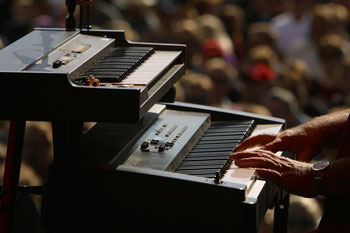 |
|||
|
Revolutions Per Minute
The usual suspects have been cited in the post-mortems: rock music, television, the Three Tenors, stupefying avant-garde atonality, format-switching radio philistines, star-struck recording executives, corporate inventory trimmers (especially at Tower Records), lousy music education, etc. Even orchestral subsidies are cited, on the valid theory that they reward "culture" in a vacuum and promote music that audiences find uninteresting and even bad. The truth of the matter is quite different. The classical audience isn't gone; it has changed. As Canada's National Post observes, it's been fragmented. Rather than equating Romantic symphonies with good musical taste, there are ever more "small but vital audiences for more specialized period music ranging from the chants of medieval monks to baroque medleys." Indeed, thanks to low CD production costs, there's more classical music available than ever. Thus, "collapse" turns out to be renewal, and "decline" is actually efflorescence. The same old song. |
Copyright 2025 Fieles.info All rights reserved.
|

 Is orchestral classical music reaching its coda? If one believes the press, the form is dead. CDs with big symphonic performances (like these) are selling poorly; such music is fading from radio; concert audiences are made up of geezers; and several major-city orchestras face collapse. One critic laments that such music "plays a smaller role in middle-class life than at any time since Beethoven's death."
Is orchestral classical music reaching its coda? If one believes the press, the form is dead. CDs with big symphonic performances (like these) are selling poorly; such music is fading from radio; concert audiences are made up of geezers; and several major-city orchestras face collapse. One critic laments that such music "plays a smaller role in middle-class life than at any time since Beethoven's death."